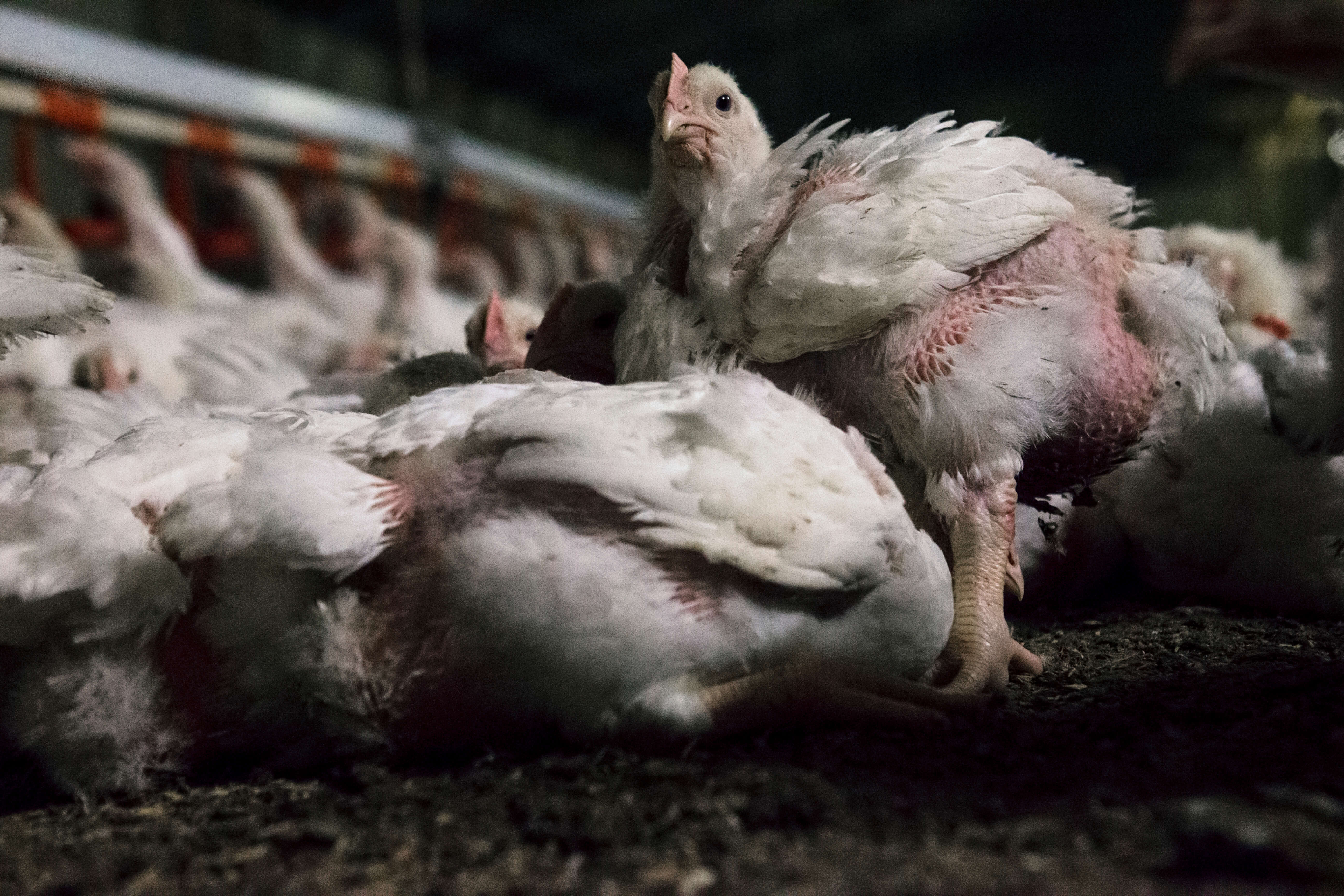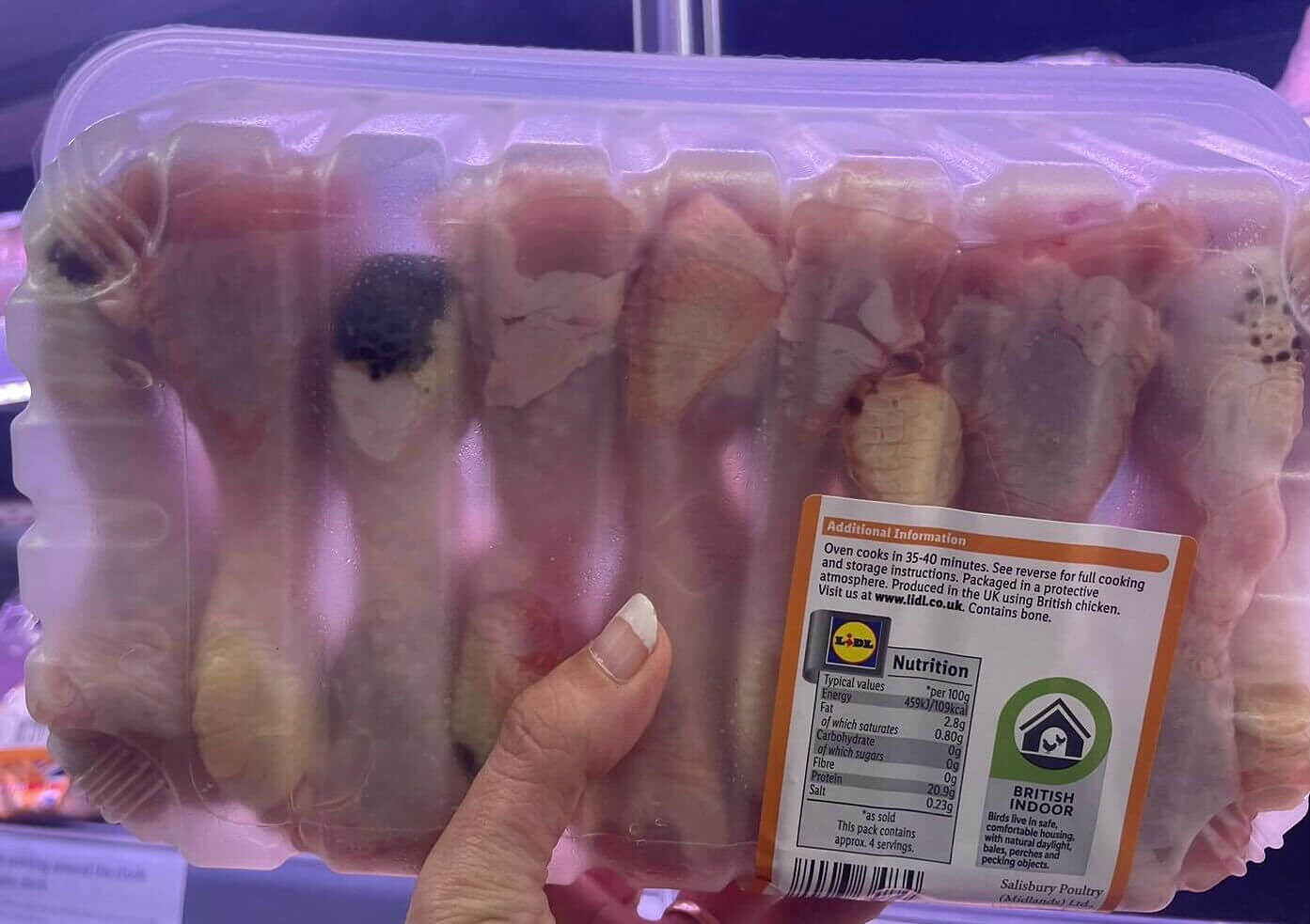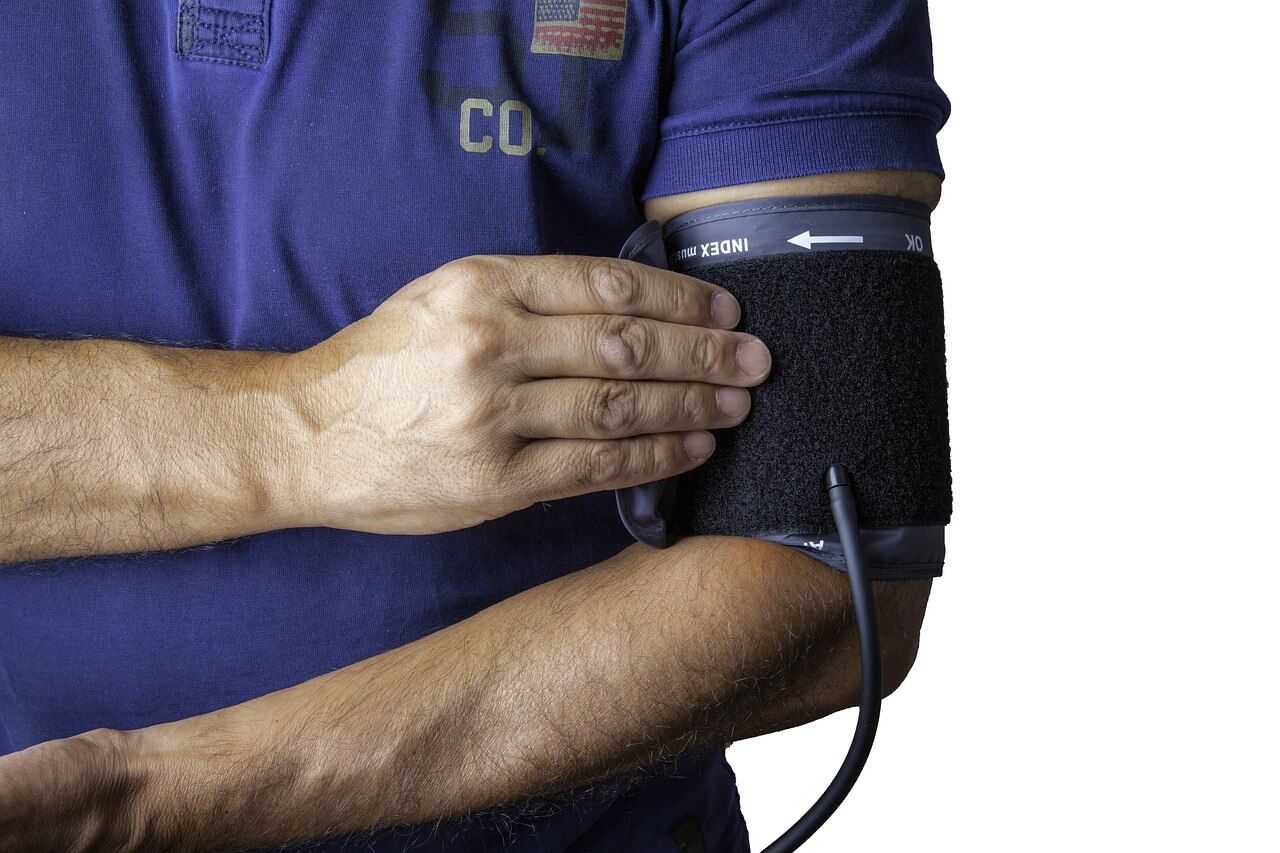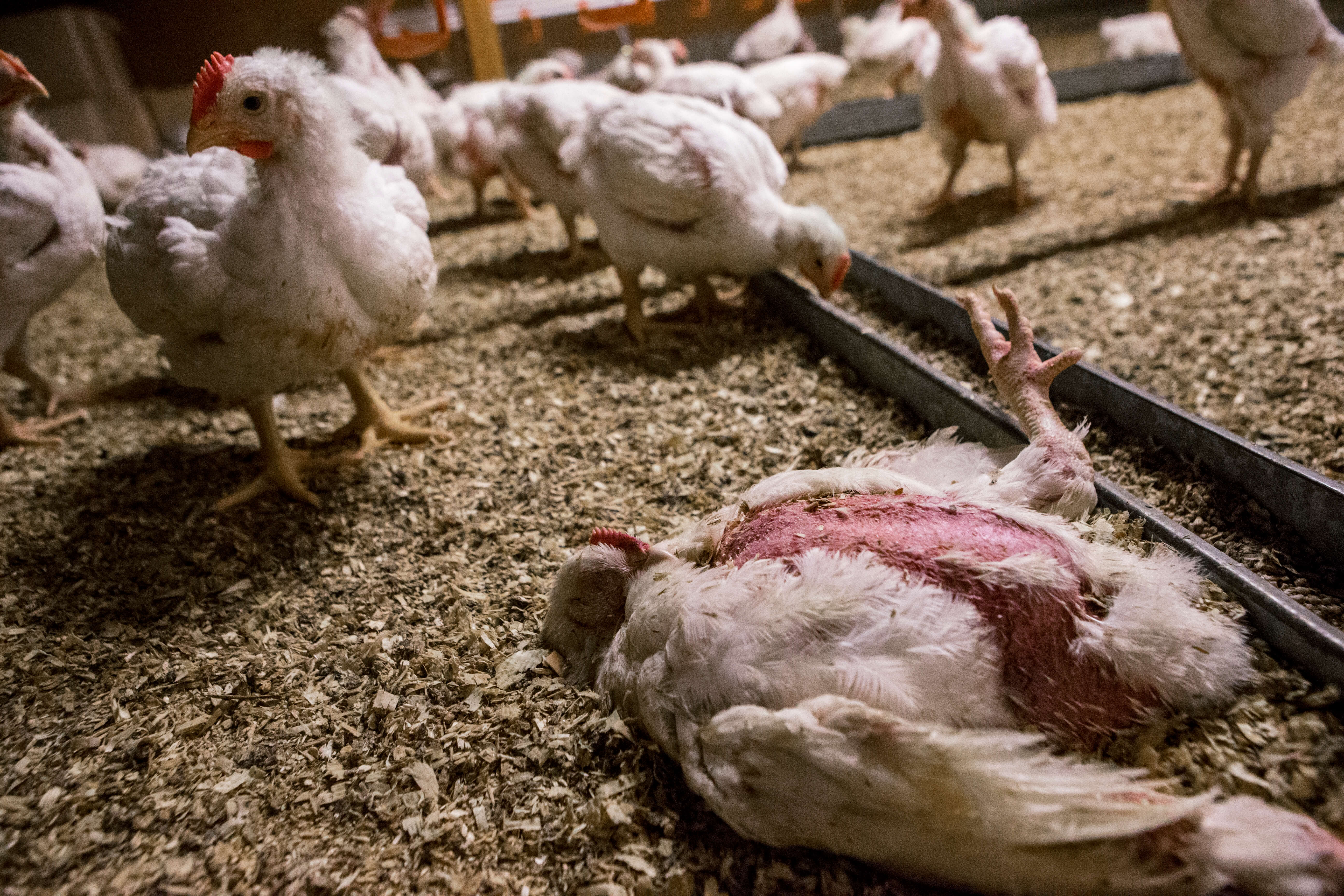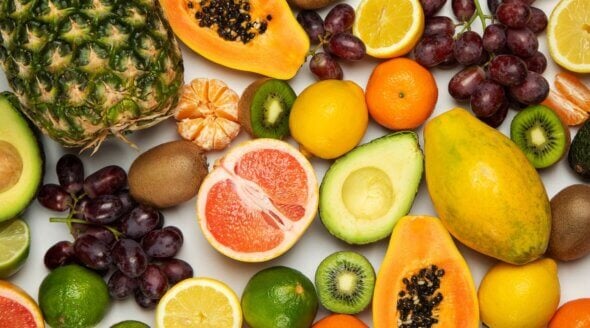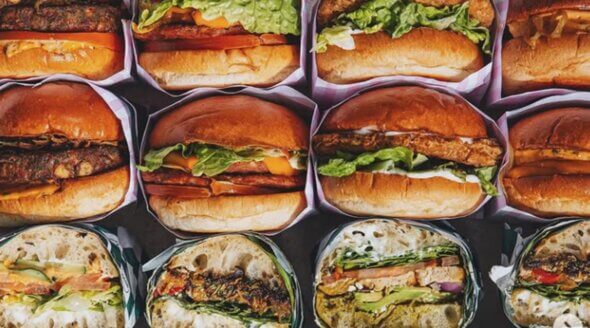Chicken Is Bad for Your Health – Here Are 5 Reasons Why
Anyone looking to add clean, lean protein to their diet should rush straight on past the shrink-wrapped chicken parts. Chicken is not a health food. It’s the carcinogenic, cholesterol-laden flesh of a sentient being who suffered their whole life before being violently killed. Find out why eating chicken is so bad for your health:
1. Chicken Contains Carcinogens
Thought that only “red meat” contains cancer-causing compounds? Think again. Chicken flesh contains quite a mouthful. Ready? How about some 2-amino-1-methyl-6-phenylimidazo[4,5-b]pyridine? Known as PhIP, this is one of the most abundant of a group of carcinogenic compounds called heterocyclic amines found in cooked flesh. PhIP, which is linked to breast, prostate, and other cancers, forms naturally in chicken flesh when it is exposed directly to high heat. A study published in the journal Nutrition and Cancer found that 100% of 100 grilled chicken flesh samples from top restaurant chains in California contained PhIP. The authors warned, “It is unclear whether there is any level at which consumption of HCAs can be considered safe.”
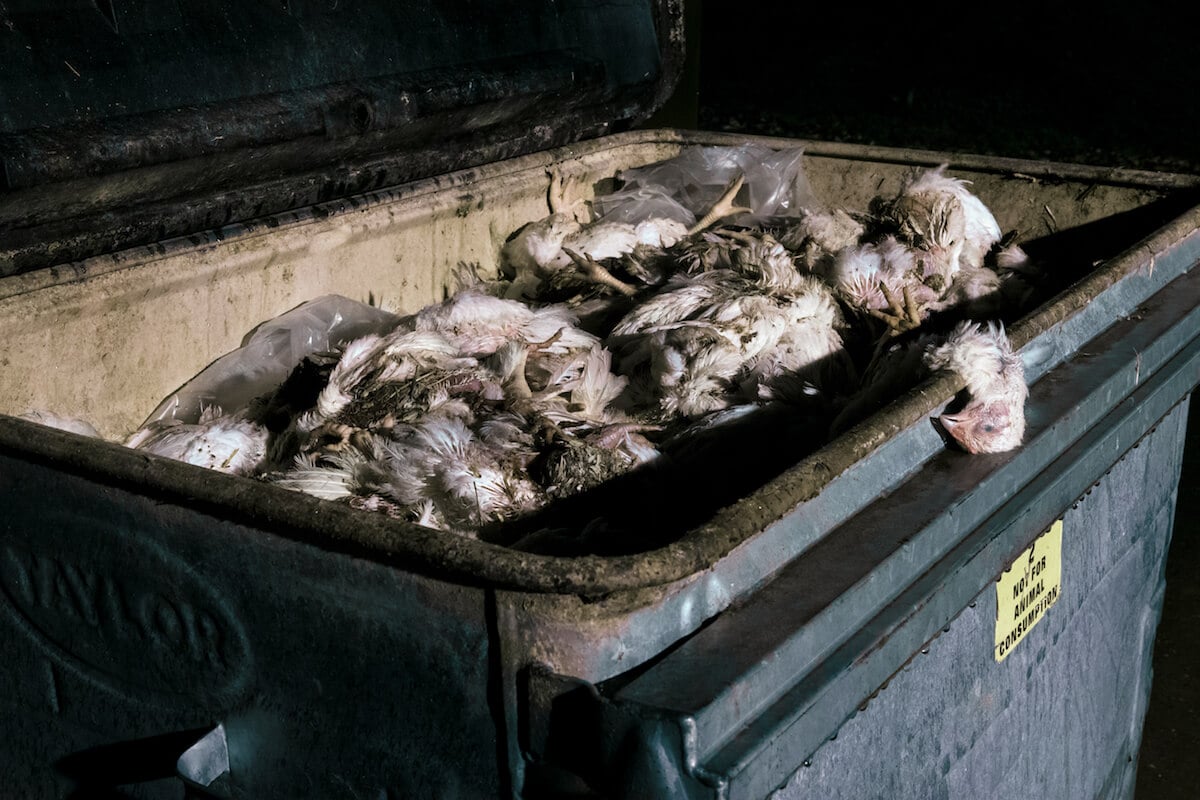
Chicken flesh also contains haem iron, which has been linked to an increased risk of colorectal cancer, type 2 diabetes, and heart disease.
And all that is before you think about processed chicken, to which chemicals such as nitrates and nitrites are added, increase the risk of bowel cancer.
2. Chicken Is Contaminated – With Poo!
Excrement from farms that cram birds by the thousands into dank sheds is contaminating our water sources – the River Wye has been described as “pea soup” and the government has been taken to court over the high pollution levels. But did you know that when you eat chicken, you’re likely eating poo, too?
Research has shown that as much as 92% of all chicken flesh on sale is contaminated with faecal matter. Gross.
So it’s hardly surprising that chicken flesh is a major cause of food poisoning. According to the Food Standards Agency, almost three-quarters of shop-bought chickens corpses are contaminated with campylobacter, which explains why eating birds continues to make almost a quarter of a million Brits ill from food poisoning every year.
Other common contaminants include salmonella and E. coli, which in addition to food poisoning causes urinary tract infections (UTI). A study published by the US Centers for Disease Control and Prevention matched E. coli in urine samples from women with UTIs to that found in contaminated foods. Most were linked to contaminated meat, 61% of which was chicken flesh.
3. Chicken Is High in Fat and Cholesterol
Chickens have been bred for unnaturally quick growth and are typically fed a high-calorie feed with antibiotics to grow an upper body so large they can barely support their own weight. This extreme weight gain causes them to suffer from deformed or arthritic legs and breast blisters or hock burn from not being able to lift their body off the ammonia-soaked floor.
Is it any surprise, then, that a medium-sized chicken now contains a pint of fat? Professors Michael Crawford and Yiqun Wang of London Metropolitan University found that chicken flesh contains as much fat, gram for gram, as a Big Mac. They analysed chicken thigh meat from several supermarkets and found that it contains more than twice as much fat as it did in 1940, a third more calories and a third less protein.
A typical chicken flesh serving is about 50% fat, of which 30% is saturated fat – the kind that raises cholesterol. A 2019 randomised controlled study comparing the cholesterol levels of chicken and turkey against cow and pig flesh and plant proteins found no significant difference between the type of meat eaten, leading the authors to conclude, “The findings are in keeping with recommendations promoting diets with a high proportion of plant-based food but, based on lipid and lipoprotein effects, do not provide evidence for choosing white over red meat for reducing [cardiovascular disease] risk.”
4. If Eating Chickens Doesn’t Kill You, Farming Them Might
Most chickens raised for their flesh are crammed into sheds with up to 50,000 other birds, where they never get to see daylight or breathe fresh air. In such conditions, they languish amid their own waste alongside dead and dying birds, making these factory farms a breeding ground for disease.
The current outbreak of highly pathogenic bird flu strain H5N1 is already decimating wildlife around the world. It can be contracted by humans and is one mutation away from spreading among humans – causing the next pandemic. Avian and swine influenza viruses have caused all influenza pandemics since 1918, killing millions of people.
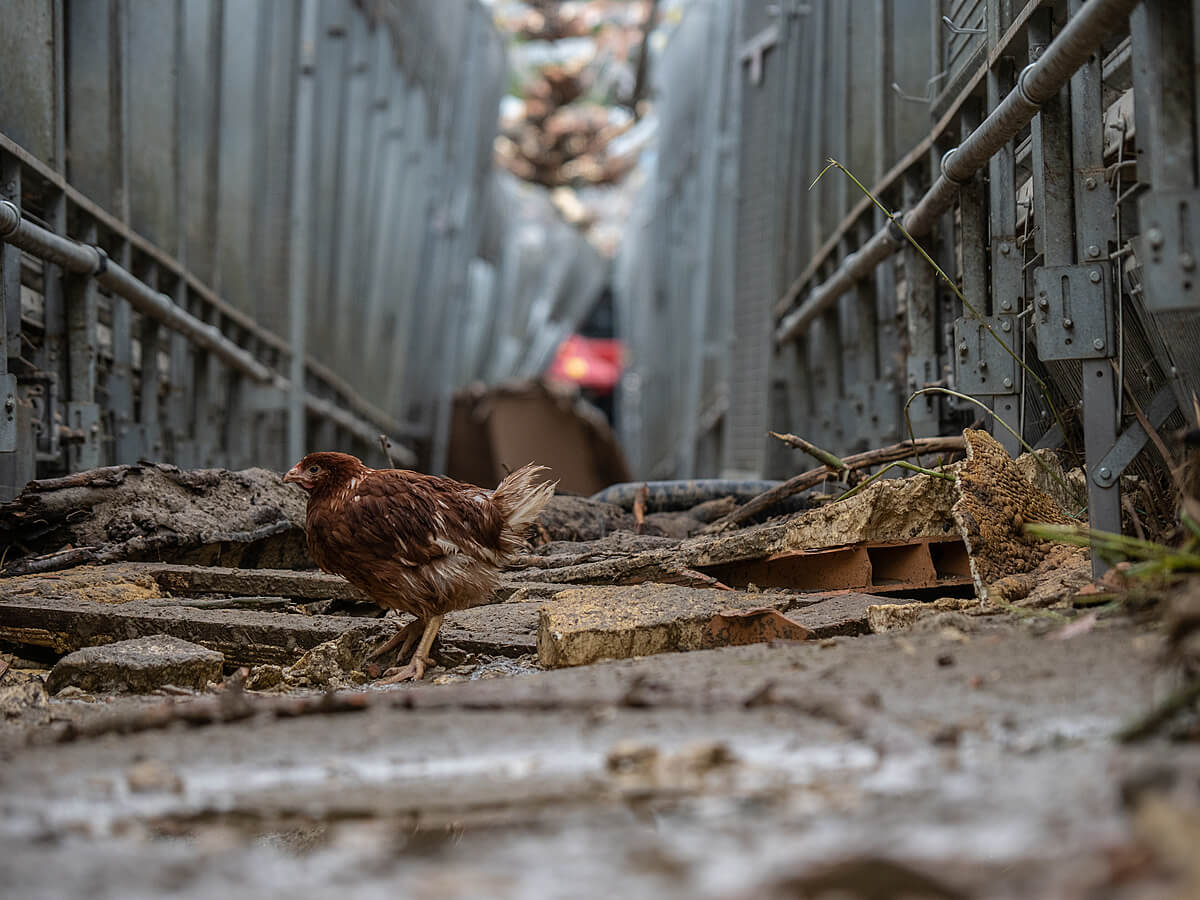
Farming practices also promote the existence of deadly “superbugs”. Chickens are often fed antibiotics just to keep them alive in the squalor they’re confined to. This contributes to the rise of drug-resistant bacteria that pose a major threat to human health. The World Health Organization considers antimicrobial resistance – the emergence of drug-resistant pathogens arising from the misuse and overuse of antimicrobials such as antibiotics and antiparasitics – one of the top global public health and development threats, believed to have been directly responsible for 1.27 million global deaths and a contributing factor to a further 4.95 million deaths in 2019.
Furthermore, high levels of ammonia and particulate matter emitted by chicken farms can be dangerous to public health, but without monitoring, there is no available data and no recourse to protect the public.
5. Plant Protein Is Healthier
It’s easy to get all the protein you need from plants. Vegan protein sources like vegetables, legumes, and grains are packed with antioxidant phytochemicals and fibre instead of saturated fat and cholesterol. Eating vegan lowers the risk of several types of cancer, type 2 diabetes, cardiovascular disease, and other top killers.
While clean protein is an important part of a balanced diet, this macro gets more press than it deserves. The average adult eats nearly twice as much as they need. Less than 1% of the UK population is protein-deficient, whereas more than 90% is fibre-deficient. Health-conscious people should place more importance on adding fibre to their diet, as it can reduce the risk of bowel cancer, heart disease, strokes, and type 2 diabetes and help regulate blood pressure and cholesterol.
Alan Murchison, a world champion duathlete and Michelin-starred chef focused on creating performance diets for cyclists, said he was once sceptical of athletes adopting vegan diets, but after cutting through an abundance of misinformation, he now urges cyclists to eat a diversity of plants for a high-performance diet. He warns that athletes eating chicken, rice, and broccoli twice a day to hit their macros, or targets for certain nutrients, “doesn’t mean you’re going to be healthy, robust, and actually have a long-term positive relationship with food”.
Chickens Deserve Better
Chickens feel joy, friendship, and love – and even dream – just like we do. Every single one has a unique personality and values his or her life. They love to play and will run, jump and sunbathe when given the chance, yet the vast majority will spend their entire lives in cramped sheds with less floor space than an A4 piece of paper. Then they’re transported to an abattoir and gassed or electrocuted before their throats are slit.
Over 75 billion sensitive, intelligent chickens are killed for their flesh every year. They’re the most abused land animal in the world.
Pledge Not to Eat Chickens
The best thing you can do for your health, the planet, and everyone we share it with is to leave chickens and all other animals off your plate. Take our vegan pledge: try vegan for 30 days and we’ll support you with recipes, meal plans, tips, and more.

